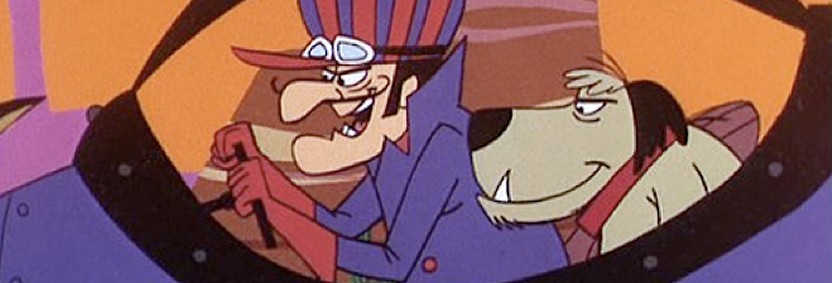As a kid, I was very fond of the word 'wacky' - largely because it featured in the title of my favourite TV shows 'Wacky Races' (if you're too young to remember it - find it on the web, you'll be glad you did). As an adult, I'm less keen. It has some unfortunate associations for me.
Trips to North Africa have echoed with locals calling out 'wacky-baccy' in the street. I don't object to merchants offering me herbal cannabis, although I decline. It's just such a silly term. But that's not really the source of my trauma. That stems from clients' use of 'wacky' at various junctures in my advertising career.
All great ads start with a brief and, as a diligent copywriter, I have always made a point of reading the brief in full. However, there are a few things that stop my perusal dead in its tracks. One is the obvious - yawning gaps in the document. But another is the appearance of that word: 'wacky'. It may crop in a sentence like 'The client has asked that we don't produce anything too wacky'. Or 'We can probably do something quite wacky with this one.'
Oh dear, oh dear. The problem isn't so much with the word, but what it says about the client's relationship with the creative process. In five letters, an unhealthy assumption reveals itself: that advertising creatives are bursting to fill campaigns with foolish, obscure, garish or ludicrous content. Not only that, but unless we are firmly instructed otherwise, we'll let loose with a stream of inappropriate craziness. It's also very patronising. Almost as if a small child is being told not to act up in a public place.
Of course, we all know the odd colleague who's eager to pack their portfolio with gratuitous weirdness and risqué concepts - and therefore pitches something outrageous whatever the requirement. In my experience, though, they are few and far between. For the most part, every creative with a modicum of experience and understanding, has one priority - to produce an idea which delivers the client's message to the right audience, in the most compelling and persuasive way. Now, sometimes the best solution does involve an unexpected or surprising execution, but that wouldn't (or shouldn't) be any kind of wilful extravagance, rather an original and noticeable means of fulfilling the brief. It's just as likely the resulting ad will be subtle, beautiful, restrained or minimal.
What is really depressing about the whole 'wacky' thing, is the notion the client doesn't believe or acknowledge the creative team will treat their brief seriously; that the studio is merely a playground for a bunch of kooks hoping to make a splash at their expense.
This, however, isn't a tirade against clients. After all, they're handing their public image and customer communications to a third-party, so they're understandably apprehensive. If we expect them to feel more comfortable with our approach, we need to make efforts to explain it, and demonstrate that, alongside our determination to be creatively effective, we are driven to understand their brand and their audience. We should also make a point of delivering a rationale for the work we produce, showing why and how we've arrived at our answer.
To do anything less would really be ... well ... wacky.
Magnus Shaw is a copywriter, blogger and consultant






